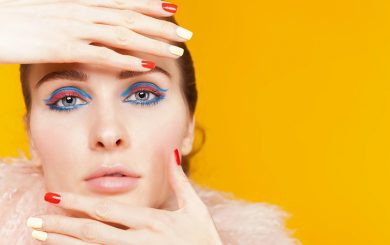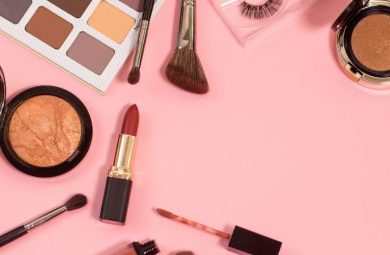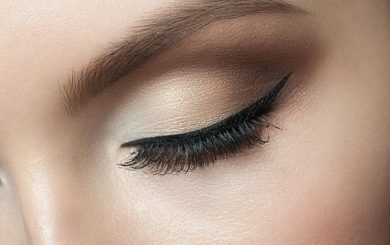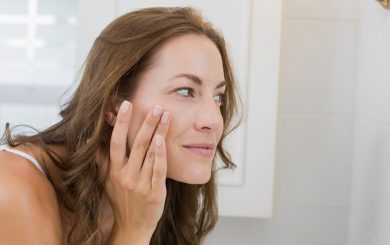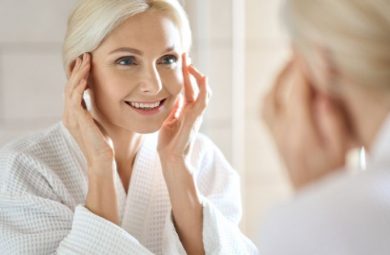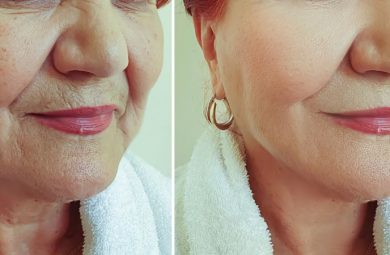A couple of years ago everyone was going crazy over the 10 step Korean skincare routine. Whilst we haven’t all got the time or energy to go through 10 whole steps, exfoliation should be considered a necessary step in every skincare routine. Exfoliating can have so many skincare benefits but only if you know how to exfoliate effectively.
Exfoliating can also be a little tricky to figure out especially if you have sensitive skin. That’s why we’ve put together our easy guide to help you understand how to exfoliate, the types of exfoliation, when to exfoliate, and also when to avoid it altogether.
Types of Exfoliation
When most people think of exfoliation, face scrubs come instantly to mind. Turns out, that is actually only one form of exfoliation. There are a couple of others which may suit some people better.
Chemical Exfoliation
Chemical exfoliation involves the use to acids to exfoliate the skin and rid it of dead skin cells. It has become an increasingly popular method over the last few years.
There are two types of acid exfoliants; AHAs (alpha hydroxy acids) and BHAs (beta hydroxy acids). We won’t get into the science of it all but you’ve probably already heard of some of the acids that fall under these categories; salicylic acid, glycolic acid, lactic acid etc.
Typically, chemical exfoliants come in a liquid form that you can squeeze onto a cotton pad and apply at night. You’ll see results the next morning instead of instantly and you should always follow with an SPF as they can make your skin more sensitive to damaging UV rays.
Chemical exfoliation reveals smoother and brighter skin and is particularly great if you suffer from acne or discoloration.
Physical Exfoliation
Physical exfoliators are ones that have gritty pieces in them, the more traditional face scrubs. The chunks are what work to physically exfoliate your skin by sloughing away dead skin cells. Physical exfoliation is great if you want to see instant results as you’re physically buffing away any texture on your skin so you will automatically be left with smoother skin.
When it comes to physical exfoliators it’s wise to avoid microbeads. There’s been a lot of controversy surrounding them and it’s better all round to stick to natural exfoliants like brown sugar!
Chemical Peel
Falling under chemical exfoliation comes its stronger and harsher sister: the peel. Chemical peels have to be done professionally at your local dermatologist and they can be a little traumatizing. They are best for people that seriously struggle with an uneven skin texture and acne-ridden skin. Peels contain a mixture of acids which physically peel off a layer of your skin to reveal a fresher layer underneath over a period of a few days. The process is quite hard and so we definitely recommend properly researching if you’re considering it.
How To Exfoliate
If you want to find out how to exfoliate you need to understand that each type of exfoliation should happen at a specific time of day.
Related Search Topics (Ads)
Related Products
You should never use a chemical exfoliator in the morning as they’re too harsh on your skin to be exposed to direct sunlight right after. They should strictly be used at night and you should protect your skin the next morning.
With physical exfoliation, it’s best to do it right before makeup. Directly after a physical exfoliation, you’ll find your skin is super smooth and makeup applies like a dream!
When To Avoid Exfoliation
Whilst knowing how to exfoliate can completely transform your skin, some skin types should generally avoid it. If your skin is oily or acne prone, then your skin is likely to be able to handle it.
Dry and sensitive skin types can often react badly to exfoliation. It can strip your skin a bit too much and leave it feeling raw. That’s why it’s best to consult with your dermatologist before incorporating it into your routine.
If you’re really eager to try it, then we’d recommend starting with using a chemical exfoliant every other week to see how your skin responds to it. It’s all about figuring out what works best for you.


